


Exploring Herb Uses In Cooking
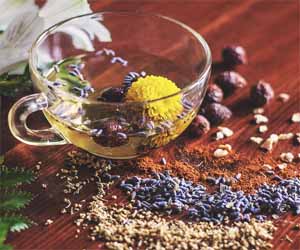
Herbs are the unsung heroes of the culinary world, capable of transforming ordinary dishes into extraordinary culinary experiences. From basil's fresh, sweet notes to rosemary's earthy aroma, herbs play a pivotal role in enhancing flavors, aromas, and visual appeal. In this article, we will delve into the delightful world of herb uses in cooking and how they can elevate your dishes to the next level.
Flavor Enhancement
Herbs are prized for their ability to impart complex and layered flavors to a wide range of dishes. They can be used in various forms:
Fresh Herbs: Fresh herbs like basil, cilantro, and parsley are added at the end of cooking or as a garnish to retain their vibrant flavors. They brighten up salads, pastas, and soups.
Dried Herbs: Dried herbs like thyme, rosemary, and oregano are more concentrated and suitable for dishes with longer cooking times, such as stews and roasts.
Herb Infused Oils And Vinegars: Herb-infused oils and vinegars, like basil oil or tarragon vinegar, are excellent for adding depth and nuance to dressings and marinades.
Pairing Herbs With Ingredients
The art of herb usage in cooking lies in pairing the right herbs with complementary ingredients. Some classic pairings include:
Basil And Tomato: The marriage of basil and tomato in dishes like Caprese salad or Margherita pizza is a match made in culinary heaven.
Rosemary And Lamb: Rosemary's robust flavor pairs harmoniously with the rich and tender nature of lamb.
Mint And Desserts: Mint's refreshing taste is perfect for desserts like chocolate mousse or fruit salads.
Parsley And Seafood: The bright, grassy flavor of parsley beautifully complements seafood dishes, such as shrimp scampi.
Versatile Uses
Herbs are incredibly versatile and can be used in various culinary applications:
Marinades: Herbs can be included in marinades to infuse meat, poultry, or vegetables with flavor. For example, a marinade of garlic, rosemary, and lemon juice can transform chicken into a delectable dish.
Sauces And Dressings: Herbs can be used to create vibrant sauces, such as pesto or chimichurri, or to elevate salad dressings, like a balsamic vinaigrette with fresh basil.
Flavoring Meats: Herbs can be used as a rub or stuffing for meats, adding depth and aroma. Sage and thyme with turkey, for instance, create a classic Thanksgiving flavor.
Infusions And Garnishes: Herbs can be used to infuse oils, butters, or even cocktails. A sprig of fresh mint in a mojito or a basil leaf in a gin and tonic can enhance the beverage's flavor and aroma.
Health Benefits
In addition to their flavor-enhancing qualities, herbs often have health benefits. For example, ginger is known for its digestive properties, while turmeric has anti-inflammatory qualities. Incorporating these herbs into your cooking not only makes your dishes tastier but can also contribute to your well-being.
Herbs are like the artist's palette in the kitchen, allowing you to create dishes that are not only delicious but also visually stunning. The art of herb usage in cooking opens up a world of culinary possibilities, where you can experiment, create, and savor the rich tapestry of flavors and aromas that herbs bring to your table. So, explore the herb garden, visit your local market, and experiment with the countless herb variations to take your culinary creations to the next level.
The Magical Transformation Behind The Brew
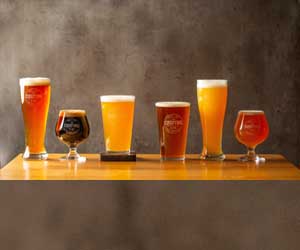 The Fermentation Process: Fermentation begins when the wort (unfermented beer) is transferred to a fermentation vessel, and yeast is introduced. The yeast starts consuming the sugars, breaking them down into alcohol, carbon dioxide, and a range of flavor compounds. During this process, the temperature and oxygen levels are carefully controlled to achieve the desired characteristics for the beer style.
The Fermentation Process: Fermentation begins when the wort (unfermented beer) is transferred to a fermentation vessel, and yeast is introduced. The yeast starts consuming the sugars, breaking them down into alcohol, carbon dioxide, and a range of flavor compounds. During this process, the temperature and oxygen levels are carefully controlled to achieve the desired characteristics for the beer style.
Primary And Secondary Fermentation: The initial fermentation, called primary fermentation, typically lasts one to two weeks. Afterward, some beer styles may undergo a secondary fermentation or conditioning phase. In secondary fermentation, the beer may be transferred to a different vessel, such as a secondary fermenter or barrels, to develop further flavors and clarity.
Flavor Development: The fermentation process is where the beer's flavor is largely determined. Yeast produces a wide variety of compounds, including alcohols, esters, and phenols, which contribute to the aroma and taste of the beer. For example, esters can impart fruity notes like banana or apple, while phenols may introduce subtle smoky or spicy characteristics.
Alcohol Production: The yeast's primary job is to convert sugars into alcohol. Ethanol, the type of alcohol found in beer, is the result of this process. The level of alcohol in the final beer depends on factors such as the type and amount of malt used and the yeast's alcohol tolerance.
Carbonation: In addition to alcohol, fermentation produces carbon dioxide, which is the source of beer's effervescence. The carbonation level can be controlled by varying factors like yeast strain, fermentation temperature, and pressure during packaging. Some beer styles are naturally carbonated, while others may undergo forced carbonation.
Achieving Consistency: Consistency in fermentation is crucial for breweries to produce the same beer batch after batch. Modern breweries employ precise temperature control and automated equipment to maintain the ideal fermentation conditions, ensuring that the beer's flavor and alcohol content remain consistent.
Relaxation Through Candles
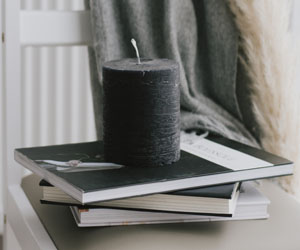 Aromatherapy And Relaxation
Aromatherapy And Relaxation
In addition to their enchanting light, candles can be enhanced with soothing fragrances that promote relaxation. Aromatherapy candles are infused with essential oils that can evoke a variety of emotions and sensations. For instance, lavender is known for its calming and stress-reducing properties, while citrus scents like lemon and orange can boost energy and elevate mood.
Incorporating Candles Into Your Relaxation Routine
Bath Time Bliss: A warm bath can be made even more indulgent with the addition of scented candles. The soft lighting and aromatic scents can transform your bathroom into a personal sanctuary, creating an oasis of relaxation.
Meditation And Mindfulness: Candles are often used as focal points during meditation and mindfulness exercises. Gazing at the flame can help clear your mind and bring about a sense of inner peace and tranquility.
Dinner By Candlelight: Set the stage for relaxation by enjoying a quiet, candlelit dinner. Whether alone or with a loved one, this simple act can turn an ordinary meal into a serene, enjoyable experience.
Bedroom Retreat: Make your bedroom a haven of relaxation by placing scented candles on your bedside table. The soothing scent and soft light can help you unwind and prepare for a restful night's sleep.
Outdoor Escapes: Take your relaxation outdoors by lighting candles on your patio or in your garden. The combination of natural surroundings and candlelight can create a tranquil atmosphere that fosters relaxation.
Yoga And Stretching: Use candles as an integral part of your yoga or stretching routine. The combination of calming scents and gentle lighting can enhance your practice and help you achieve deeper relaxation.
Healing Stitches For Mind And Soul
 Sense Of Accomplishment: Completing a cross-stitch project provides a tangible sense of accomplishment. Watching a piece of artwork slowly take shape, stitch by stitch, instills a feeling of pride and boosts self-esteem.
Sense Of Accomplishment: Completing a cross-stitch project provides a tangible sense of accomplishment. Watching a piece of artwork slowly take shape, stitch by stitch, instills a feeling of pride and boosts self-esteem.
Emotional Expression: Cross-stitching can be a form of emotional expression. By selecting colors, patterns, and designs, individuals can channel their emotions into their creations, helping them process and cope with challenging feelings.
Distraction From Negative Thoughts: The process of cross-stitching serves as a constructive and enjoyable distraction from negative or intrusive thoughts. It can help redirect mental energy away from worries and concerns.
Connection And Community: Many individuals find solace in the cross-stitching community. Sharing projects, tips, and experiences with others can provide a sense of belonging and support, reducing feelings of isolation.
To engage in cross-stitching therapy and reap its mental health benefits, consider the following steps:
Select A Project: Begin by choosing a cross-stitch project that matches your skill level and interests. Start with simpler patterns if you're new to cross-stitching.
Gather Materials: Acquire the necessary materials, including embroidery fabric, cross-stitch thread, embroidery needles, and an embroidery hoop. High-quality materials can enhance the crafting experience.
Learn The Basics: Familiarize yourself with cross-stitching techniques and patterns. Many resources, including books, online tutorials, and classes, are available to guide beginners.
Create A Relaxing Environment: Find a quiet and comfortable space to cross-stitch. Set up your materials in an environment that promotes relaxation and mindfulness.
A Journey Through Innovation And Diversity
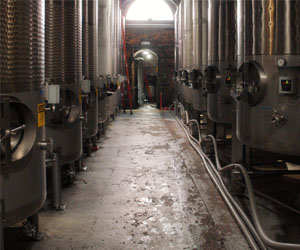 Diverse Terroirs: One of the remarkable features of New-World wines is the wide range of terroirs they encompass. New-World wine regions can be found across the globe, from the high-altitude vineyards of Argentina to the cool-climate wine regions of Oregon. This diversity allows for the cultivation of various grape varieties, each suited to specific terroirs. As a result, New-World wines offer an array of flavors and styles that cater to a broad spectrum of preferences.
Diverse Terroirs: One of the remarkable features of New-World wines is the wide range of terroirs they encompass. New-World wine regions can be found across the globe, from the high-altitude vineyards of Argentina to the cool-climate wine regions of Oregon. This diversity allows for the cultivation of various grape varieties, each suited to specific terroirs. As a result, New-World wines offer an array of flavors and styles that cater to a broad spectrum of preferences.
New Grape Varieties: New-World winemakers have been open to experimenting with grape varieties from around the world, introducing lesser-known grapes into their vineyards. For example, in the United States, you'll find varieties like Zinfandel and Petite Sirah, which are less common in European regions. This willingness to diversify grape varieties has led to the discovery of new and exciting flavor profiles, expanding the options available to wine enthusiasts.
Emphasis On Approachability: New-World wines are often celebrated for their approachability. While Old-World wines can sometimes come across as complex and reserved, New-World wines tend to be more fruit-forward, making them accessible to a wider audience. This approachability has contributed to the global popularity of New-World wines.
Innovative Aging Techniques: Many New-World winemakers have embraced modern aging techniques, such as the use of oak barrels from different regions, new oak versus old oak, and a range of toasting levels. These practices have helped create wines with distinctive characteristics, pushing the boundaries of traditional winemaking.
Sustainability And Environmental Practices: New-World wine regions have also been at the forefront of sustainable and eco-friendly winemaking practices. Many vineyards and wineries prioritize sustainability, organic farming, and environmentally responsible practices. This commitment to preserving the land and minimizing the environmental impact is a crucial aspect of New-World winemaking.
Nourishing Your Locks Naturally
 No Harmful Chemicals: Conventional haircare products often contain harsh chemicals that can strip hair of its natural oils and lead to damage and breakage. Organic haircare products are free from these potentially harmful chemicals, which means they're less likely to cause long-term damage to your hair.
No Harmful Chemicals: Conventional haircare products often contain harsh chemicals that can strip hair of its natural oils and lead to damage and breakage. Organic haircare products are free from these potentially harmful chemicals, which means they're less likely to cause long-term damage to your hair.
Environmentally Friendly: Organic haircare brands often prioritize sustainable and eco-friendly practices. They use ingredients sourced from ethical and sustainable suppliers and package their products in recyclable or biodegradable materials. This reduces the environmental impact of haircare routines.
Nourishing Ingredients: Organic haircare products often contain nourishing and hydrating ingredients like aloe vera, coconut oil, argan oil, shea butter, and essential oils. These natural components provide moisture, shine, and strength to your hair.
Safer For Color-Treated Hair: For those who color their hair, organic haircare products can be gentler and safer. They help maintain the vibrancy of hair color without the risk of fading or damage.
Holistic Hair Health: Organic haircare takes a holistic approach to hair health. It emphasizes the interconnectedness of overall well-being with healthy hair. A well-balanced diet, adequate hydration, and reduced stress are all factors that contribute to the well-being of your hair.
Gentler On Sensitive Scalps: Organic haircare products are formulated with milder, natural ingredients that are less likely to irritate sensitive scalps. They can help alleviate issues like dandruff, itchiness, and flakiness without causing further discomfort.
Cruelty-Free: Many organic haircare brands are cruelty-free, meaning they don't test their products on animals. This ethical stance aligns with the principles of compassionate consumerism.
Unearthing Value In Vintage And Thrifted Finds
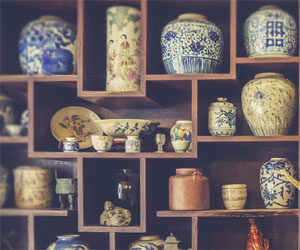 Unique Finds: Secondhand treasures are unique and distinct from mass-produced, contemporary goods. Vintage items often feature designs, craftsmanship, and aesthetics that are no longer readily available in modern markets.
Unique Finds: Secondhand treasures are unique and distinct from mass-produced, contemporary goods. Vintage items often feature designs, craftsmanship, and aesthetics that are no longer readily available in modern markets.
Quality Craftsmanship: Many secondhand items were created during eras when quality and durability were highly valued. These pieces often exhibit superior craftsmanship, making them appealing to those who appreciate well-made goods.
Environmental Consciousness: Secondhand treasures align with eco-conscious lifestyles. By buying used items, consumers reduce the demand for new manufacturing and help minimize waste and carbon emissions.
Historical And Cultural Significance: Secondhand treasures carry history and cultural significance. Each item has its own story and represents a slice of the past, offering a tangible connection to bygone eras.
What Can Be Found
The variety of secondhand treasures is astounding. These items span numerous categories, including:
Clothing: Vintage clothing, including dresses, suits, and accessories, allows wearers to showcase unique and timeless style.
Furniture: Secondhand furniture pieces, such as mid-century modern chairs, antique tables, and vintage cabinets, add character and functionality to homes.
Collectibles: Vintage toys, records, antique books, and rare coins are sought-after collectibles that capture nostalgia and historical value.
Home Decor: Secondhand home decor items, like vintage artwork, retro kitchenware, and decorative glassware, infuse charm and personality into living spaces.